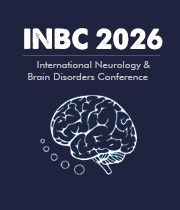Neurohistology
Neurohistology is the study of the microscopic anatomy of the nervous system, including brain, spinal cord, and peripheral nerves. This discipline involves the use of various biochemical, morphological, and immunohistochemical techniques to study neurons, glia, and other resulting structures. In particular, this branch of biology focuses on the chemical composition, physical structure, and biochemical events within neurons, glial cells, and other elements of the nervous system. The ultimate goal of neurohistology is to understand how the nervous system works and to make life-changing discoveries related to diseases and disorders of the nervous system. This area of biological research uses the techniques of histology, which is the study of basic structure and function of tissue, to investigate the structures within the brain and other neural tissue systems. Neurohistology studies cellular changes at a microscopic level in order to gain insights into the development, structure, and function of the neural tissue. Neurohistology employs various laboratory techniques to study nerve cells, glial cells, and other components of the nervous system. Microscopy is a primary tool in this field, allowing scientists to visualize microscopic details of the structure of the nervous system. Stains can be used in order to observe different proteins, lipids, and glycoproteins in both neurons and glial cells, thereby helping to identify specific components of nerve tissues. Additionally, techniques like electron microscopy, immunohistochemistry, and in situ hybridization can all be used to identify molecules, cell types, and receptors within neural tissue. The insights from neuroscience gained through neurohistology enable us to better understand the nervous systems and have direct implications for developing treatments for a variety of neurological conditions. For instance, by being able to accurately identify the components of neural tissue and how they interact with one another, scientists can develop drug therapies and other treatments that target the cause of the underlying condition.

Joe Sam Robinson
Mercer University, United States
Robert B Slocum
University of Kentucky HealthCare, United States
George Diaz
Memorial Healthcare Systems, United States
Daniel Curry
Texas Children’s Hospital, United States
Zhenhuan Liu
Guangzhou University Chinese Medicine, China
Kiran Ghotra
Lake Erie College of Osteopathic Medicine, United States




Title : Atypical presentation of Juvenile myoclonic epilepsy in a 16-year-old female: A Case Report
George Diaz, Memorial Healthcare Systems, United States
Title : What we don’t know about hydrocephalus and It’s management
Daniel Curry, Texas Children’s Hospital, United States
Title : Artificial intelligence-driven DWI and FLAIR for the detection of early stroke changes: A systematic review
Shari L Guerra, The Medical City, Philippines
Title : Mapping neuroplasticity in occupational therapy: Evidence-based interventions with measurable neural outcomes
Jessica Marchant, Texas Woman's University, United States
Title : Non-pharmacologic management of orthostatic hypotension in inpatient rehabilitation: A quality improvement initiative
Laura Steakin, Rehabilitation Institute at Sinai, United States
Title : Non-pharmacologic management of orthostatic hypotension in inpatient rehabilitation: A quality improvement initiative
Mackenzie Weber, Rehabilitation Institute at Sinai, United States